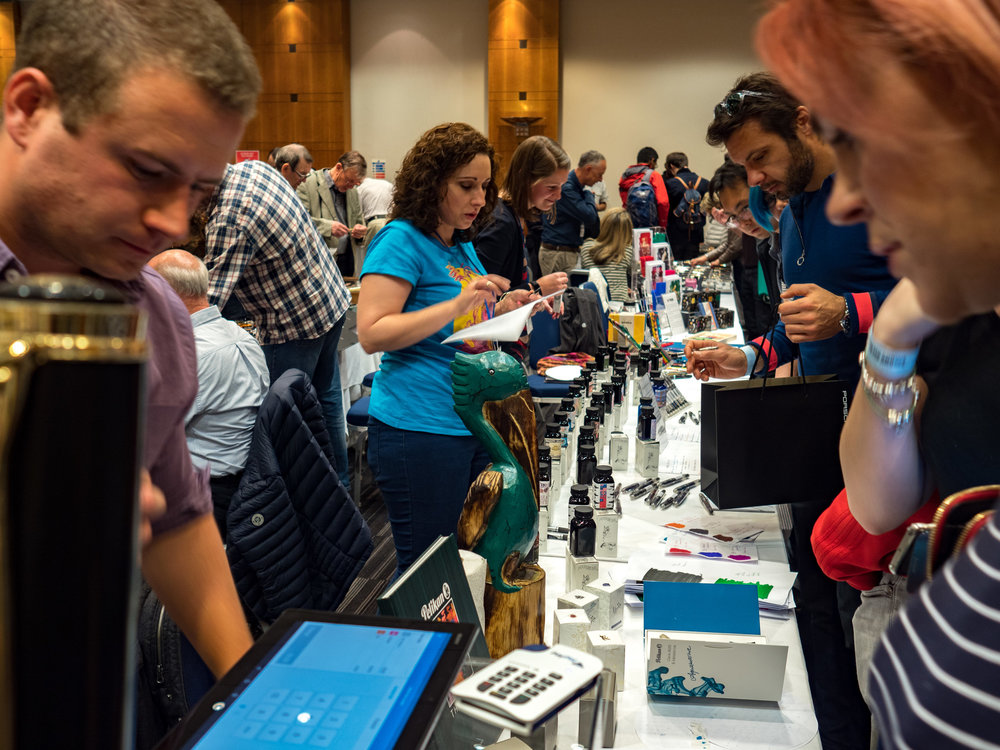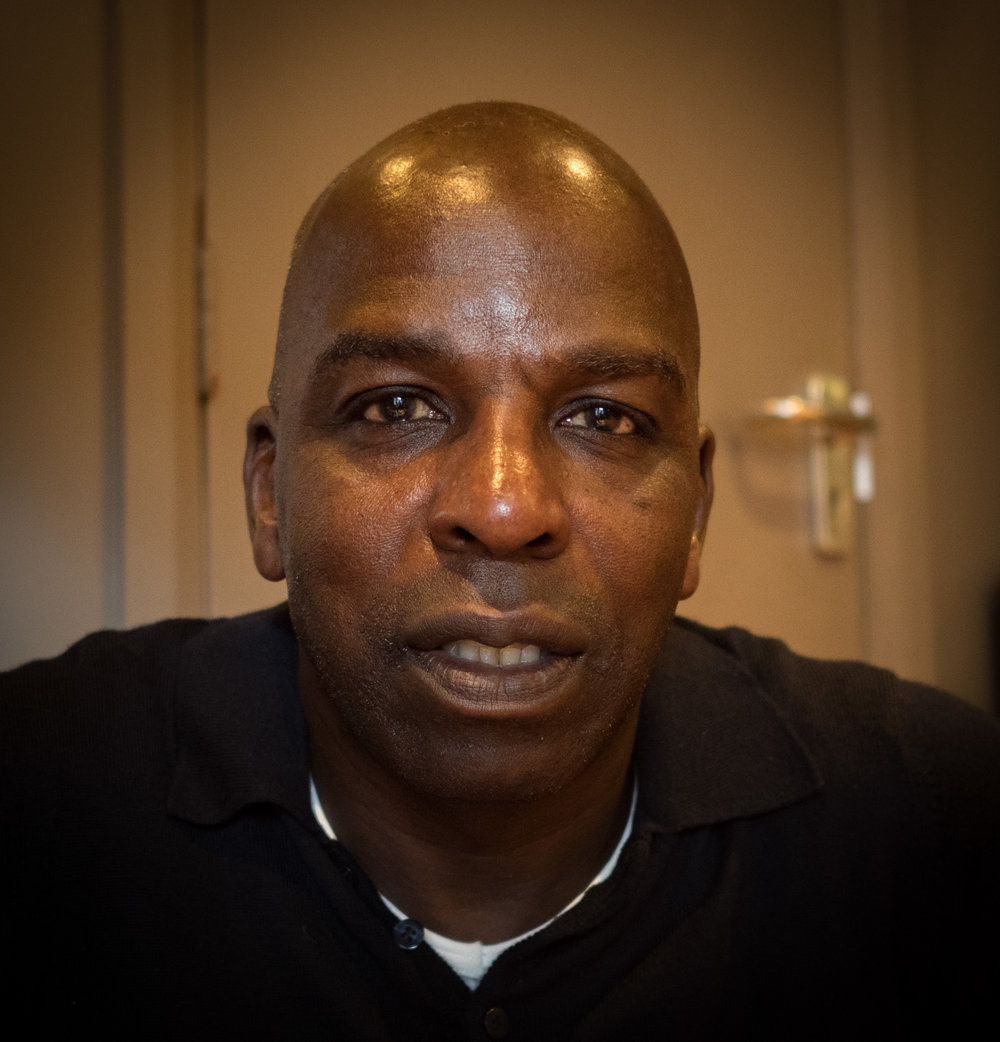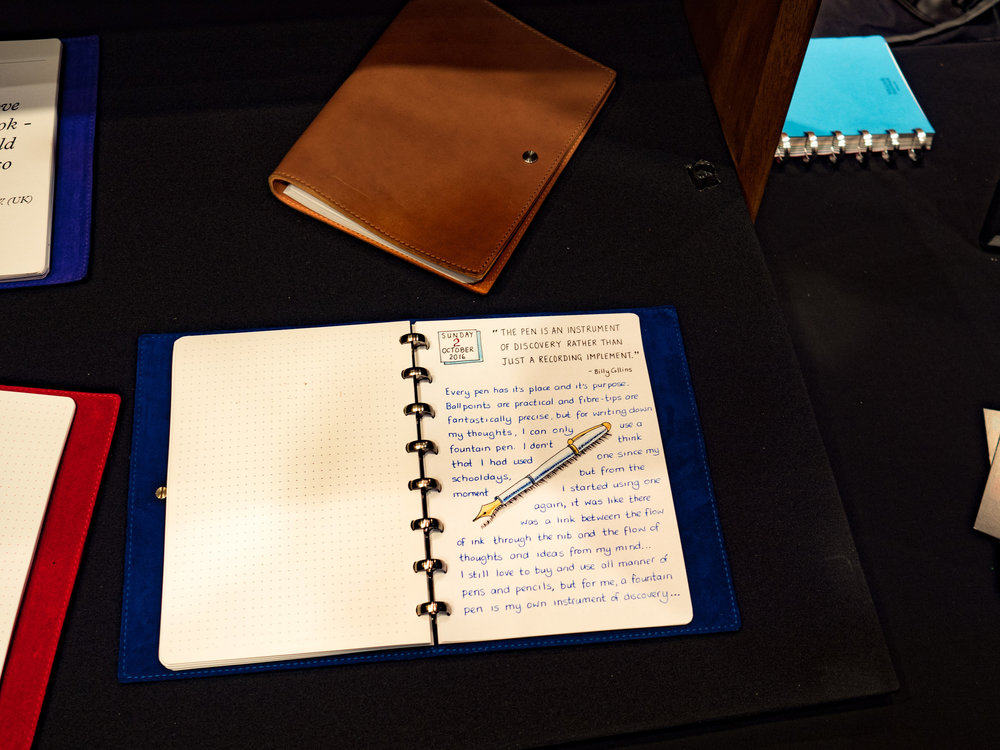
Yesterday I sat down with Ray Walters, the pen enthusiast and dealer I met at the London Writing Instrument Show on October 2, to discuss vintage pens over a cappuccino or two. I’d brought along an eclectic mix of old gems from my bottom drawer. I fancied a clear out (you know, get rid of the old to make way for the new) but it became clear that very little of my stuff had real value. We agreed I would be better off putting them on eBay. But that’s not the story.

The story is the Lamy Safari which was sitting atop my Leuchtturm notebook on the Caffe Nero table. That, said Ray, is the best, my favourite. It’s as cheap as chips but writes like a dream, whatever nib you choose. It’s the consistency that astounds in this retro classic, a cheeky, larger-than-life instrument that looks like Thomas the Tank Engine disguised as a pen.
Who needs a gold nib?
It turns out that Ray, who runs a successful mail-order business in vintage pens (specialising in Montblanc and Pelikan) is a Lamy buff. As far as he knows he is the only independent pen retailer without public premises who is accredited as a Lamy dealer. He readily admits that the cheapest steel-nipped Lamy Safari can write every bit as well as pens costing hundreds if not thousands of pounds. You don’t really need gold nibs and fancy barrels to write a good hand.

The story of Lamy goes back to 1930 when C.Josef Lamy, who had worked as an export manager for Parker Pen Company in Germany, purchased a pen manufacturer in Heidelberg — the Orthos Füllfederhalter-Fabric (Orthos Fountain Pen Company). He was soon producing Orthos and Artus brands. He was a pioneer in the use of moulded synthetic plastics and, as it turned out, a master of design. Many think that the humble Lamy Safari, which has been in continuous production since 1980, is the apotheosis of function and design. It epitomises German design as much as, say, the Braun razor or, if I may be permitted, the Leica M3.
Faultless performance
There’s nothing flashy about the Safari (and its various derivatives, some with metal bodies). Designed by Gerd Müller, the Safari epitomises functionality. It fits the hand perfectly, with its comfortable indents for the thumb and forefinger; it feels just right. And those basic steel nibs write far better and more smoothly than anyone would give them credit for.

I now own a good half dozen Safaris because they are extremely cheap by fountain pen standards (around £15 each). I can afford to have pens with the full gamut of nibs. I can compare extra fine with fine, medium with broad. And all write like a dream. I have not yet come across a Lamy Safari that is scratchy in any way (and this is more than can be said of some pens costing 30 times the price).
Reader Martin W.Smith agrees. He read my previous piece on Lamy and went straight out and bought one. As he says, he hasn’t used a fountain pen since school but he’s now using the Lamy Safari and loving it. In common with most of us, Martin has discovered that handwriting is a vanishing art. These days we mostly hammer away at keyboards or, even worse, glass virtual keyboards. The opportunity (and need) to write with a pen shrinks by the year. I can envisage a time where handwriting is completely unnecessary, will not be taught and will wither away as a lost art.
Practice makes almost perfect
That’s why it’s important to practice. As with any form of exercise or repetitive action, if you don’t do it you lose the ability. This is especially so with writing. A few years ago I discovered my handwriting was becoming jerky, untidy and definitely unattractive. I gripped the pen excessively and writing became a chore. The cause was lack of practice. So I bought some notebooks, dusted off my fountain pens, and wrote. I wrote nonsense. I wrote out “Now is the time for all good men to come to the aid of the party” (the typists practice mantra) until my fingers were sore. But this practice does work. My writing has now returned to the fluency I knew in my twenties when I learned italic cursive and took a real pride in my output. Those were the days of typewriters and handwriting. Notebooks and paper diaries were an essential part of life.

I now keep a Leuchtturm notebook by my side on the desk (and another in my day bag) and write for the pleasure, rather than the necessity. There is seldom anything earth shattering there (I still confide anything really important to Messrs. Apple and their various clouds) but doing the writing gives me an inordinate amount of pleasure.
If you haven’t written by hand frequently for a long time, why not turn over a new leaf? Go out and invest all of £15 in a Lamy Safari — I suggest starting with a medium nib — and a good quality notebook. Leuchtturm or Rhodia are my favourites, but the ubiquitous Moleskine will do for starters if you have trouble finding the others. Moleskine notebooks, although nice to use, have a tendency for fountain-pen ink to penetrate the paper and spoil the other side for writing. It doesn’t happen with all nibs or all inks but Leuchtturm, in particular, manages to minimise this problem.
Getting back your writing mojo is one of the more satisfying things you can do with your time.
______________
- You can find Ray Walters here.
- Subscribe to Macfilos for free updates on articles as they are published. Read more here
- Want to make a comment on this article but having problems? Please read this


I have now become quite obsessed with fountain pens and just ordered a Lamy Studio, this time with a fine nib. I have quite small handwriting and think a finer line will be better. I’m writing every day so hopefully my hand writing will improve. Thank you for the recommendations.
Hmm I’d better have a look at one of those. I fancy a more up-market Lamy as long as it writes as well as the basic Safari. I used to favour broad nibs but since I’ve been using smaller notebooks the lines are too close. So I changed to fine and I now much prefer it. I think it helps my writing and ensures I stick to the lines. Thanks for your comment.
Mike, I am glad to see you "on Safari"! I too have a few. In my case I progressed from the rollerballs to the fountain pen and a couple of months later sold my Montblanc Meisterstuck Le Grand Platinum (which had always leaked and been "repaired" three times…) The big thing for me is that I am sinistral and Lamy offer a left handed nib that appears to be actually designed as such from the ground up rather than a "flipped" right hand design. I am a huge fan of these little gems and delighted to see them getting the attention they deserve!
The best pen would be the one that you have in your hand when you want to write something….
I don’t suppose those old monks were upset that they didn’t have a MontBlanc in the 1200’s, they just got on with producing their glorious waffle with the business end of a goose feather. So I agree with you Mike when you say that for most things, the keyboard is your usual port of call.
Having said that, you have inspired me.
I am now sitting here toying with the idea of getting hold of a notebook and pen for making notes whilst on a photography course. You never know, I might learn how to write again… I don’t remember scrawling anything other than my moniker for whoever is attempting to extract some sort of promise from me, for a very long time.
Though my wife did just remind me that many years ago whilst enjoying the benefits of some high spirits, I whipped my Caran D’Ache ballpoint pen out of my pocket and declared that I didn’t need a word processor, as I carried one around all the time. My… how we all laughed.
I left it in Sainsbury’s after writing a cheque (remember them?) and slid seamlessly into keyboardery.
Michael,
I am blushing, but meant every word said.
I am going to introduce you to the delights of the Lamy Persona, significantly more expensive, designed by Mario Belini for Lamy 1990 – you will appreciate the Bauhaus feel and look.
I suppose you have one in stock!!! I can see I shall have to have a look at one of these. Soon.
It’s nice to see that other folks share my liking for fountain pens and writing. I was taught (forced, in fact) to write in an italic hand in the 1950s, with dip pens, and haven’t stopped since. The Safari is a great pen, and, as I carry a fountain pen at all times, is not so expensive that, if I lost it, the cost of replacement wouldn’t be too much. For "best", I have Montblancs, Duofolds, various oddds and ends and a couple of the Italix moels.
I’ve recently bought a couple of ebonite Indian eye-dropper pens, and changed the nibs for Schmidts. These are also fine pens, at very decent prices.
I can also recommend Midori, Banditapple and Clairefontaine notebooks for quality paper, with no bleed-through. My favourite inks are KWZ and Diamine.
Keep scribbling!
Thanks for the advice on additional pens, notebooks and inks. I do agree with you on the Lamy in that it is no great disaster if lost. Since a new replacement is going to write just as well as the original (which is not the case with many fountain pens), it’s just as easy as reloading a web page. £15 isn’t much to worry about whereas £200 or £500 pens are a constant worry.